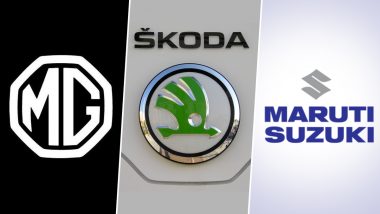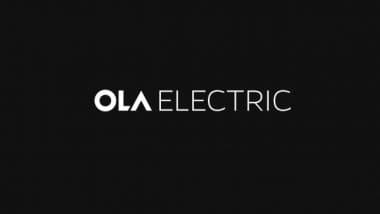Even though electric vehicles (EVs) have been available for purchase by members of the general public for over a decade, EVs still account for a mere handful of all vehicle purchases each year in the U.S. In fact, EV sales account for less than 5% of all vehicles purchased. Part of the reason why EV sales still make up such a small amount of total vehicle sales is due to the generally higher up-front costs of EVs, as well as a general lack of infrastructure needed to support a broader consumer market of EVs.
Despite these factors, however, there has been a rush - particularly in the last year - to raise incredible amounts of funding for privately-held EV businesses and expedite their placement and performance in the U.S. stock market as publicly-traded companies.
In this article, our team of industry experts at findthebestcarprice.com will explore why this push to bring so many EV-related companies public has been heavily expedited in the past year, as well as some of the companies in the EV sector who have taken advantage of this opportunity.
SPACs and EVs: The Connection
As of Summer 2020, the only major manufacturer of EVs that was publicly traded on the U.S. stock market was Tesla. Since that time, dozens of special purpose acquisition companies (SPACs), otherwise known and referred to as “blank-check companies,” have raised billions of dollars in a sprint to bring more EV companies to the stock market.
"The first few months have seen more activity and interest in EV-related stocks than at any point over the past decade,” says Steve Birkett, the leading EV expert at findthebestcarprice.com. “Tesla has kicked the door open for investors and it looks like everyone is searching for the stock that will follow their lead."
SPACs raise funds to bring a private company public via reverse mergers or reverse initial public offerings (IPOs). Unlike traditional IPOs, SPAC investors generally don’t know what company(s) they will be investing in, this allows the companies receiving SPAC investment funds to pitch SPAC investors solely on their financial market projections, rather than pitching the company’s business model.
“Because many EV companies have yet to bring their product to the commercial EV market - be it a new technological innovation, an infrastructure project, or simply a new EV model itself - and coupled with the projected growth of the global EV market in the years to come,” Birkett adds, “it’s little wonder that so many companies in the EV sector have received SPAC funding over the last two years.”
Now, let’s take a closer look at some more specific and recent developments regarding SPAC funding in the EV sector.
Recent Announcements
EVgo: This past January, EVgo - a subsidiary of LS Power and owner of one of the largest EV charging networks in the U.S. - announced its merger with Climate Change Crisis Real Impact I Acquisition Corp. (CRIS), “in a transaction that will raise about $575 million,” to accelerate the company’s manufacturing buildout of its fast-charging station network throughout the U.S., “and value [EVgo] at about $2.6 billion.”
Volta Charging: in early February 2021, Volta Charging announced it would be going public due to its merger with Tortoise Acquisition Corp II (TAC2). The merger came as part of a deal that allowed Volta to rake in some $600 million USD in net proceeds, half of which came from private SPAC investments “from funds and accounts managed by BlackRock Inc., Fidelity Management & Research Co., LLC, and Neuberger Berman Funds,” which placed Volta and its ad-supported network of EV charging stations at a value of approximately $2 billion USD.
Lucid Motors: hardly two weeks after Volta announced their merger with TAC2, Lucid Motors - a designer of UX-focused luxury EVs - announced its own merger with SPAC Churchill Capital IV (CCIV), “combining at a transaction equity value of $11.75 billion.” As a result of the merger, Lucid is now valued “at an initial pro-forma equity value of approximately $24 billion at the offer price of $15.00 per share.” The transaction likewise provided Lucid with some $4.4 billion in cash.
ChargePoint: Not long after both Volta and Lucid announced news of their mergers, shareholders of Switchback Energy Acquisition (SBE) voted to greenlight a reverse merger with ChargePoint after originally agreeing to the deal, which valued ChargePoint’s equity at $3 billion, last September. The two entities combined into ChargePoint Holdings (CHPT) which began trading on the U.S. stock exchange on March 1st, 2021. ChargePoint operates over 100,000 EV charging stations in Europe and North America with a goal to expand this number to 2.5 million by 2025, which in turn noooo has led to a projection of 60% revenue growth annually over the next five years.
Numerous other EV companies have received SPAC funding between late 2020 and early 2021, including light-duty EV manufacturers Fisker (whose merger with Spartan Energy Acquisitions valued the company at $2.9 billion), Lordstown Motors (valued at $1.6 billion), and Faraday Future (valued at $3.4 billion). Manufacturers of electric buses, trucks, and other heavy-duty EVs have also received SPAC funding in that time, including companies such as UK-based company Arrival (whose merger with SPAC CIIG Merger Corp. valued the EV company’s equity at $5.4 billion), Lion Electric (valued at $1.9 billion), and Proterra (valued at $1.6 billion).
Another EV company Rivian Automotive, Inc., is also rumored to be going public later this year with a valuation of $50 billion as a result of its being backed by digital retail giant Amazon; however, this is supposedly being conducted via a more traditional IPO rather than a through a SPAC reverse merger.
With the equity valuations for so many companies in the EV space swelling into the multiple billions of dollars, this begs the question: “What does this mean for the commercial consumer?”
Benefits of Buying SPAC-funded EVs
"EVs have come a long way in just a few short years,” says Birkett, “to the extent that automakers are now pitching their all-electric options directly against gasoline-equivalent competitors. For example, Volkswagen is offering its new ID.4 crossover over the popular Toyota RAV4 or Honda CR-V, with a longer warranty and what amounts to "free fuel" for three years, courtesy of the VW-funded Electrify America charging network."
Contrary to popular belief, purchasing an EV sooner rather than later is much more beneficial to the individual buyer. The sooner an EV is purchased, the sooner the buyer can start to see themselves saving more money than they would through purchasing a more “traditional” or non-electric vehicle. This is due to a number of factors, including:
Recuperated Costs Over Vehicle Lifetime: though purchasing any EV currently on the market still costs buyers higher upfront premiums of approximately $5,000-10,000, this upfront cost is easily recuperated over the lifetime operation of the EV through lower/no fuel costs and minimal requirements for routine vehicle maintenance. Most EVs only require routine checkups for maintenance, such as cabin filter replacements and tire rotations, and until EV-related tax incentives and early adopter benefits expire, the per-mile cost of driving EVs is pennies-on-the-dollar compared to the per-mile cost of driving traditional gas-powered vehicles.
EV-related Incentives: while most individuals looking to potentially purchase an EV are aware of the $7,500 federal U.S. tax credit they can receive from their purchase, this incentive was initially written by the previous administration to expire when an EV manufacturer sells over 200,000 total units. As such, for some of the most popular EV manufacturers in the U.S. such as General Motors and Tesla, this incentive has already expired, and will likely expire later this year as more EVs are manufactured by companies such as Ford and Nissan.
“However,” says Birkett, “this system is likely to change in late 2021 or early 2022 to better match the legislative goals of the Biden administration. For example, the current administration has already started legislation on its ‘Growing Renewable Energy and Efficiency Now (GREEN) Act 2021,’ and has stated it is committed to reinstating some kind of tax credit/incentive for GM and Tesla.” Though there is still a possibility that legislators could declare incentives such as these have served their purpose for American EV consumers, this leaves the potential for legislators to either adjust or outright remove the federal incentive entirely, meaning that buyers who are currently in the market to purchase a new EV could see the price tag rocket back up $7,500.
Early Adopter Benefits: we already mentioned Volta Charging, whose network of charging stations throughout the U.S. are financed solely through advertising revenue in order to provide free EV charging for drivers, but this is likely to dissipate once more companies in the EV space begin producing larger quantities of EV charging stations. Other EV manufacturers likewise offer trial periods of free or reduced charging costs for new EV drivers, further limiting driving costs of EVs when compared to traditional gas-powered vehicles, but there is no telling how long these benefits will remain effective.
Final Thoughts
It can be safely assumed that once EVs are considered more the norm of vehicles bought and used regularly by commercial consumers, these benefits will begin to dissipate more rapidly as they tend to with other new technologies that slowly become the norm in consumer markets. Be sure to visit our website for more information, news, and updates on EVs.













 Quickly
Quickly




















